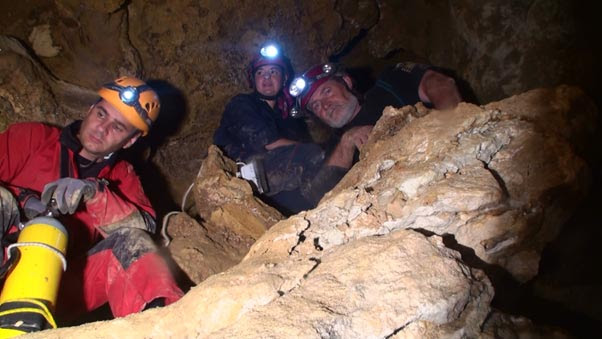Welcome Back to the Lab!
And Happy New Year! I think I speak for everyone when I say I’m ready to wash my hands of 2020. But there were a few highlights to celebrate this year, including several exciting, newly described species. But none quite compare to Cryptops speleorex, an exclusively cave-dwelling centipede that was recently described in the journal ZooKeys.

Cryptops speleorex is an apex predator in its underground ecosystem. This 2″ long centipede makes its home in the Romanian cave Movile, which was only discovered (by accident) in 1986.
Caves, much like islands, offer a unique and fascinating glimpse into how the course of an organisms evolution is shaped by its environment. These ecosystems are highly specialized, with many species only occurring within a single cave system and no where else on the planet. Such is the case of Cryptops speleorex.

Movile cave does not sound like a place that should harbor life at all; isolated from the surface for 5.5 million years, it has been described as more similar to Mars than to Earth. The cave ‘atmosphere’ consists of 100x more carbon dioxide than we are used to and 1/3rd of surface oxygen levels. Don’t forget a dash of methane. Life can only exist here at all thanks to the chemosynthetic bacteria; photosynthesizing plants are non-existent.
Yet life finds a way, and it wasn’t by crawling down from the surface, which was the position held by many researchers since the cave’s discovery. Not convinced, scientists Dr. Varpu Vahtera (University of Turku, Finland), Prof Pavel Stoev (National Museum of Natural History, Bulgaria) and Dr. Nesrine Akkari (Museum of Natural History Vienna, Austria) decided to investigate, and an expedition to collect and study the centipede was underway.
“Our results confirmed our doubts and revealed that the Movile centipede is morphologically and genetically different, suggesting that it has been evolving from its closest surface-dwelling relative over the course of millions of years into an entirely new taxon that is better adapted to life in the never-ending darkness,” the researchers explain.
“The centipede we described is a venomous predator, by far the largest of the previously described animals from this cave. Thinking of its top rank in this subterranean system, we decided to name the species Cryptops speleorex, which can be translated to the “King of the cave.”

Given the year we’ve had, I find the life of this centipede somewhat inspiring. Despite living in conditions that have been described as “hellish,” it has not only adapted but absolutely dominated. Proof positive that life will always find a way.
